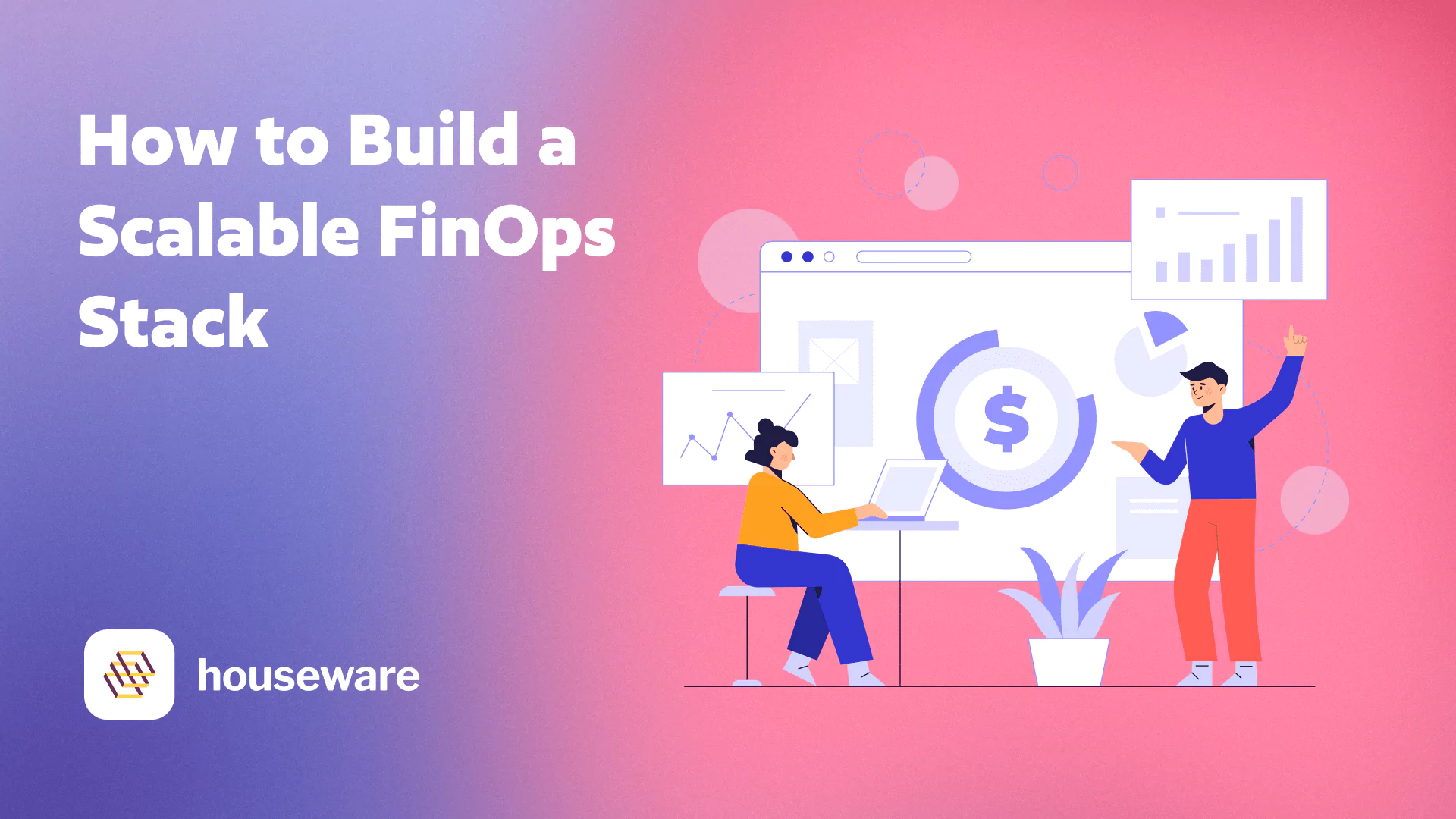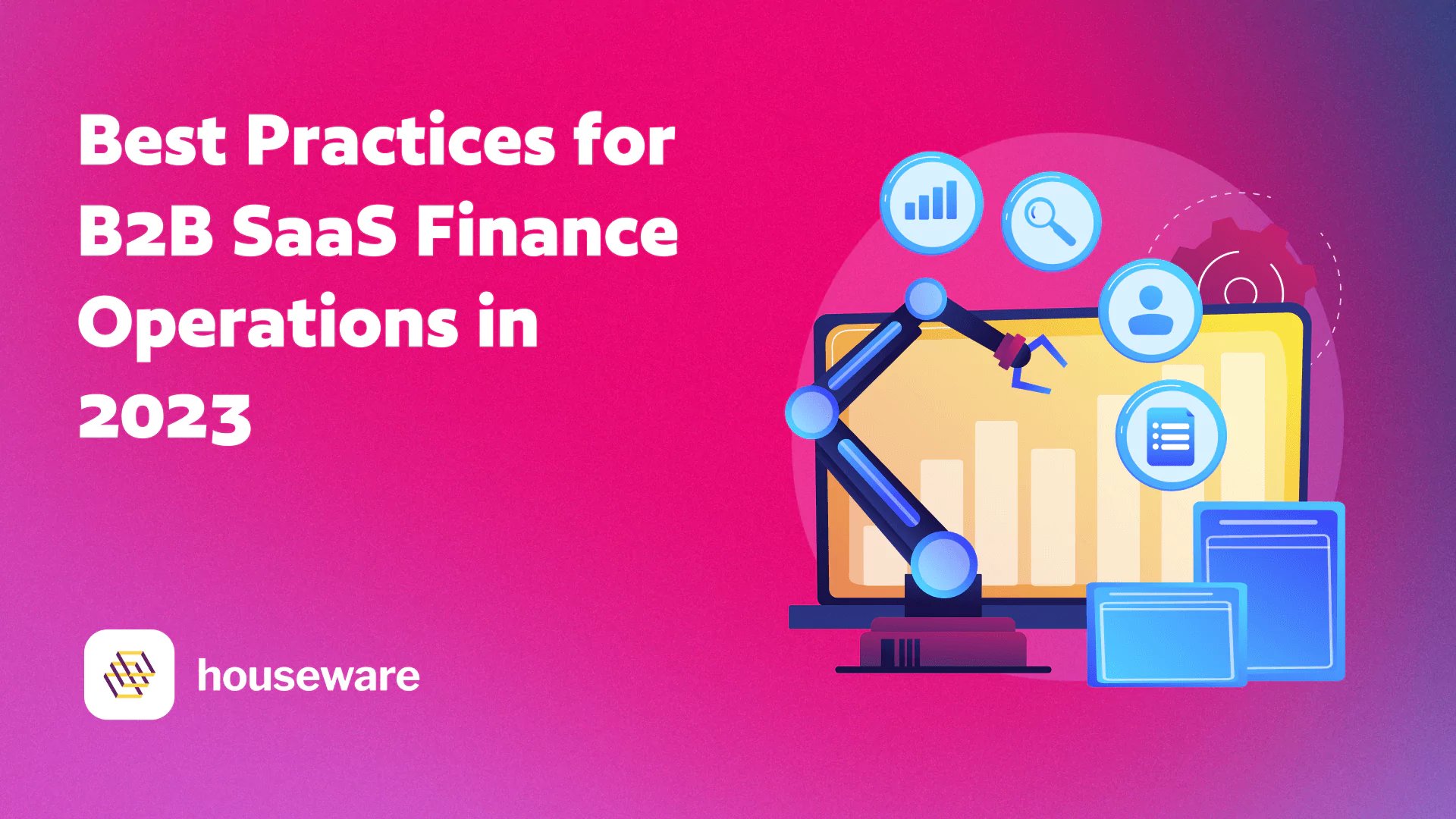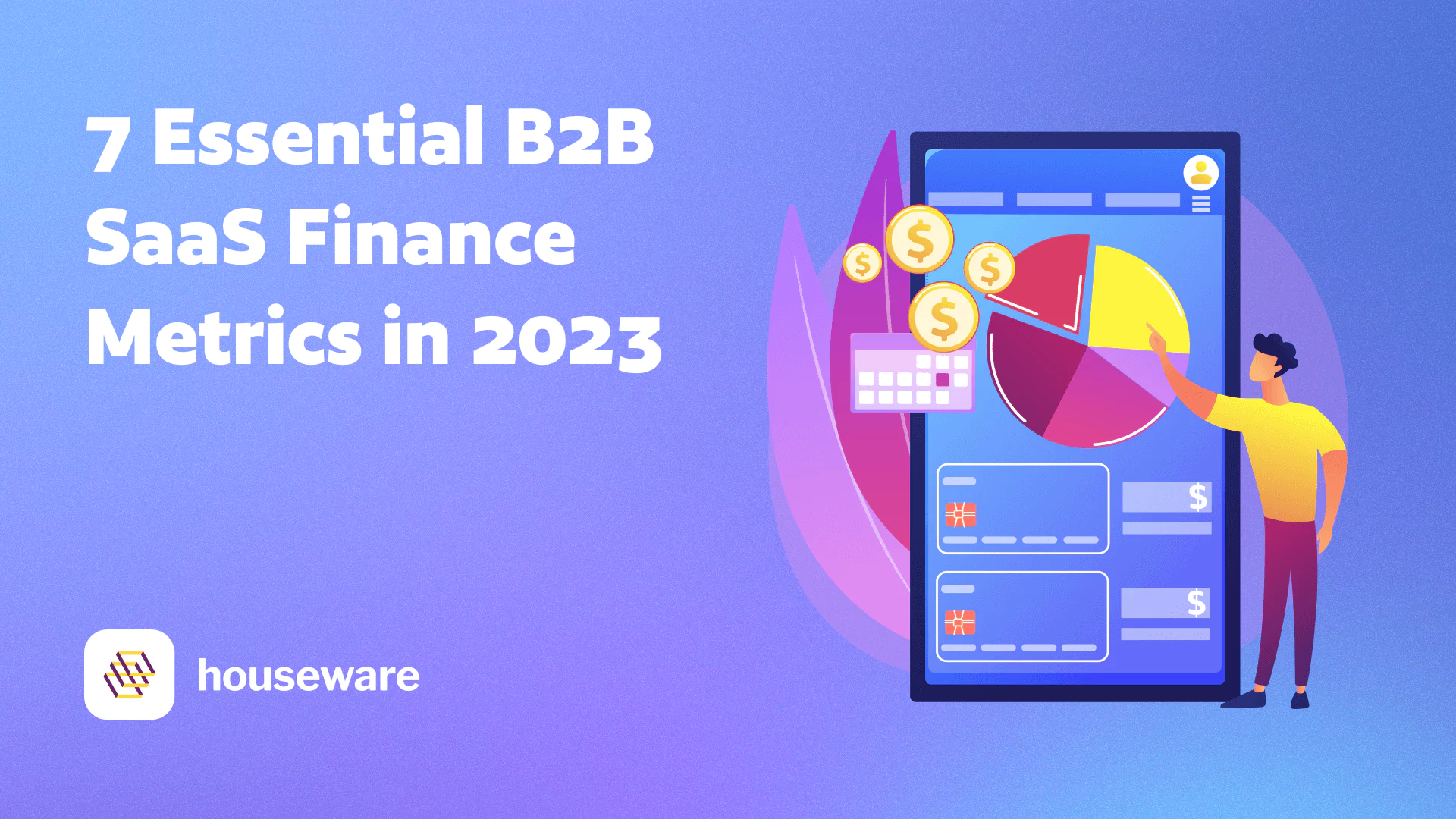How to Build a Scalable FinOps Stack

In the macroeconomic environment of 2023, we are increasingly seeing free cash become expensive throughout markets: investors are much more careful than before regarding the kind of businesses that they select for their portfolios. For most SaaS companies, this implies a shift in focus from growth at all costs to sustainable profitability, and intelligent cash flow management.
Finance teams are at the heart of driving these initiatives. However, the question always arises: how do they drive these initiatives? With dozens of responsibilities to juggle: from expense management to accounts receivables, finance teams, and CFOs today need to make sure that each of their responsibilities is completed on time with the highest accuracy. As finance teams chase efficiency and accuracy in completing their workflows, knowing the right tools to solve their problems at the right time, can be transformational.
This trend has been going on quietly for over a decade and most SaaS enterprise businesses have evolved to solve these challenges through tools and robust operational stacks. Going by the numbers, companies typically use an average of 110 SaaS tools, which is up 10x from 2015. The trend is clear: businesses want more done, and technology can help.
Traditionally, SaaS finance teams start out using spreadsheets and adopt ERP solutions as they mature and scale. However, most organizations also go through a long stage between these two milestones, where Excel doesn’t cut it for their use cases and ERP systems are overkill. While many organizations usually keep relying on manual spreadsheet-based processes for their operations, this does not have to be the case.
There are many tools available out there today for solving different use cases across the accounting stack, and you can supercharge your finance function by properly relying on these tools. All you have to know is what you need to get done, and which tool in the market does it for you. In this blog, we’ll be talking about some prominent use cases in accounting, and how you should evaluate tools that help you solve them.
Reporting
Right metrics being reported at the right time are a critical part of ensuring that a business stays healthy and key decisions are executed on time, hence, numbers and reports are a core requirement from any finance function. In 2023, this information will be even more valuable as businesses go all in on driving sustainable growth. This information is usually consumed by the leadership team and the wider growth team to guide their operations and decide their way forward.
There are several challenges associated with financial reporting, however, that make it really tough to crack:
- Complex payment scenarios: In B2B SaaS, there are usually many payment scenarios like prorations, discounts, refunds, etc. that make it difficult to standardize calculations
- Limited Visibility into Customer Behavior: B2B SaaS companies have limited visibility into customer behavior, and since changes in customer usage patterns can impact financial results, it becomes challenging to accurately forecast revenue and expenses.
- Non-uniform customer acquisition costs: In order to acquire new customers, B2B SaaS companies incur significant sales and marketing expenses. These expenses are typically capitalized and recognized over time, but the timing and method of recognition can impact financial reporting accuracy.
Any solution that your company considers for solving financial reporting must ensure the following:
- It has access to all the required data for making calculations about the company’s expenses and revenue
- It should provide a simple interface for the financial analysts to create and modify reports as required by the company’s context
- It should provide a layer of representing this information in a form that can be easily consumed by stakeholders outside of the finance team (a "visualization layer")
Revenue Recognition
Revenue recognition is one of the most important practices for SaaS businesses going into 2023. In the looming macroeconomic environment, as it becomes necessary to objectively quantify your business’ success, it becomes important to rely on standardized metrics which can help you calculate how you are doing, according to widely accepted definitions. Revenue recognition allows you to do exactly this by providing pre-defined metrics by GAAP/IFRS standards.
B2B SaaS finance teams usually face the following challenges in implementing revenue recognition:
- Complex payment models: B2B SaaS companies often use subscription-based revenue models, which have complexities like usage, contract length, and payment terms. This makes it challenging to accurately report standard metrics.
- Payment cycles: B2B SaaS companies often require customers to pay upfront for a subscription. Revenue recognition for these contracts can be challenging because revenue must be recognized over the contract's term, even if the customer has already paid in full.
- Contract modifications: it is not uncommon for contracts to be renegotiated or modified during a subscription term. This includes activities like adding or removing features or services. Revenue recognition for these contracts can be challenging because companies must account for any changes to the contract's value and timing of revenue recognition.
Any solution that you use must stay updated with the latest accounting practices for revenue recognition and should also be directly connected to the data in your company required to calculate these insights.
Subscriptions
Most SaaS businesses operate on subscriptions. Customers typically sign up and pay a recurring fee at regular intervals, such as monthly or annually, in exchange for access to the software application or service. The subscription fee varies based on usage, the number of users, or the features and services being provided.
Some challenges with managing subscriptions for finance teams are:
- Complex Subscription Structures: B2B SaaS companies offer subscriptions with complex pricing structures, with different tiers. Managing these subscriptions can be challenging, as companies must accurately track usage and ensure that customers are charged the correct amount.
- Subscription Renewals: Subscription renewals are a critical component of B2B SaaS businesses, as recurring revenue is a key source of revenue. Managing subscription renewals can be challenging, as companies must identify upcoming renewals and proactively engage with customers to encourage them to renew.
- Customer Churn: Customer churn is a common problem in the SaaS industry, which can significantly impact subscription management. When customers cancel their subscriptions, companies must ensure that their access to the software or service is terminated, and billing is stopped in a timely manner.
- Billing Disputes: Billing disputes will inevitably occur in your business. Managing these disputes can be challenging, as companies must investigate the dispute and work with the customer to resolve the issue.
- Compliance Requirements: all companies may be subject to compliance requirements, such as GDPR or CCPA regulations, which impact subscription management. Companies must ensure that they are in compliance with these regulations and that customer data is managed appropriately.
A subscription management system becomes a key part of the financial operations stack, and you should make sure that the solution you choose checks the following boxes:
- Integration: you should choose a subscription management solution that integrates with their existing technology stack. This helps to keep all workflows streamlined and ensures that data is accurately shared across systems.
- Scalability: As a company grows and adds more customers, its subscription management needs will change. You should choose a subscription management solution that can scale with the business and handle increasing volumes of subscriptions and customers.
- Features: Different subscription management solutions offer different features, such as the ability to manage complex pricing structures or automated renewals. You should consider your specific needs and choose the best solution for yourself.
- Security: Subscription management involves sensitive customer data, so you need to prioritize security and compliance. This includes features such as data encryption, secure payment processing, and compliance with relevant regulations.
- Cost: The cost of a subscription management solution can vary widely, and B2B SaaS companies should consider their budget and choose a solution that offers good value for money. It's also important to consider the long-term costs, such as any fees or commissions charged on transactions.
- Customer support: Finally, as with any complex product, you need to consider the level of customer support offered by a subscription management solution as part of your decision. This includes access to technical support, training resources, and assistance with onboarding.
Spend Management
Spend management is a critical part of cash flow management in B2B SaaS organizations. Proper spend management can help organizations optimize their costs, plan budgets effectively, and even manage their vendors efficiently. Some challenges that organizations face while implementing spend management are:
- Complexity: companies have complex spending patterns, with expenses spread across multiple departments, teams, and projects. This makes it difficult to track spending accurately and ensure that expenses are properly authorized and allocated.
- Data Integration: Spend management requires accurate and up-to-date data from multiple sources, including financial systems, procurement systems, and expense management tools. Depending on the setup, ensuring that this data is properly integrated and reconciled can be a significant challenge for a company.
- Vendor Management: B2B SaaS companies may work with multiple vendors, each with its own pricing structures and billing cycles. Managing vendor relationships and negotiating favorable terms can be complex and time-consuming.
- Compliance: B2B SaaS companies may be subject to multiple regulatory requirements, including tax regulations and industry-specific compliance standards. Ensuring compliance with these regulations can be a significant challenge, particularly for companies operating in multiple jurisdictions.
Any spend management platform that you choose must solve these challenges and make sure that it satisfies the specific requirements of your organization.
Your Scalable Financial Operations Stack
The above list should give you a framework on how to choose different tools for the use cases that your finance teams face in their day-to-day operations. However, it is important to call out one thread that stays common across all of them: access to data that they can use.
Collaboration across systems - from marketing and sales for expense management to customer success for subscriptions and revenue management - lies at the heart of finance teams’ efficiency. And working with data is the most basic activity that allows this collaboration and all subsequent insights to occur.
Getting to this data is really difficult today, because of the basic reason that as functionalities improve with each new SaaS app, so do our data silos. Data today sits across many different SaaS tools across your entire organization: even within the finance team, chances are that you are implementing multiple SaaS tools for managing the use cases we’ve detailed above. To seamlessly work across all your tools and unlock the power of each of them, you are confronted with complicated data heavy-lifting from one tool to another, and often, combining insights from several disparate sources in order to create one coherent view of your business.
This is the exact problem that Houseware sees in the SaaS ecosystem today. We believe that solutions like ERP software, Excel spreadsheets, and point-solution SaaS tools are only built for handling specific tasks (or function-specific workloads). Their utility runs out if you want to do any analysis across your entire business stack (from marketing to customer support to accounting), or move data from one tool to another for your use cases. Instead of making data accessible across your organizations, these solutions create silos that make it harder for data to move.
At Houseware, we believe that in order to make data accessible, organizations should turn to their existing central system of record: the data warehouse. This is usually the place where the data for your entire organization is synced - Houseware enables you to transform your data warehouse from a place where data is stored to a place where data provides direct business value. We allow you to create business metrics and entities (like users, transactions, leads, etc.) across your business functions, right on top of the data warehouse, and directly connected to your SaaS tools. What's more: this data is accessible to you wherever you want: from Slack to Google Docs.
Our mission is to make the data within the data warehouse available to business users at the speed of thought.
Some of the benefits you can see with Houseware right off the bat:
- Reduce your costs by keeping your data in your own warehouse - giving you more transparency about what you store and use
- Collaborate better with teams such as product and growth across the company, by providing them a better view of their financial targets and budgets, through data
- Use insights (like product usage, and sales performance) from other teams to guide pricing decisions and growth forecasts for the company
- Skip the months-long data onboarding cycle, simply give Houseware access to the data you need in your warehouse, and get value out of the box!










